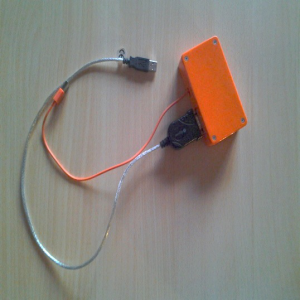(Monitoraggio dell’Ambiente gLAciale mediante Tecnologia RFID)
MALATRA’ (Monitoraggio dell’Ambiente gLAciale mediante Tecnologia RFID, Glacier Environment Monitoring using RFID technologies) involves both Fondazione Montagna Sicura than Envisens Technologies as partners, to develop a new tracking & identification systems using low cost small sensors (“tags”). The tags are placed inside the ice and allow to measure different physical quantities (e. g. temperature). A portable and more complex system (“reader”) is managed by an operator at a certain distance from the tags and it is able to read data measured by each tags and detect their displacement.
The project is developed within the research unit GLACIES – GLaciers And Cryosphere International Expert Study group.
Main components
TAG
An ex novo electronic board (PCB – printed circuit board) has been developed to implement the functionalities of RFID tag and reader.
The RFID tag is equipped with a microcontroller and a memory for storing data. The board is programmed to periodically poll the sensors and store their data on the local memory. Remotely, it is possible to query the board via radio and download all the data. PCB has been interfaced to the following sensors:
- Magnetometer: it allows to orient the capsule in relation to the north
- Accelerometer: it allows the identification of capsule’s movements in the time.
- Pressure sensor: it allows the measuration of the pressure acting on the capsule.
- Temperature sensor: it has been adopted and calibrated a PT1000 probe in order to measure the smallest changes in temperature.
CAPSULE
EST has designed and developed a new prototype of a capsule for tag in PLA (Polylactic Acid). The PLA is a biodegradable thermoplastic derived from renewable resources such as corn starch or potato or tapioca roots. The process of biodegradation of the material is still closely related to factors such as temperature, humidity, oxygen, concentration of microorganisms that the substance encounters in its process of biodegradation. Therefore it is difficult that in glacial environment it will be decomposed.
The prototype has been built with the new technology of 3D printing.
READER
The reader consists of a PCB assembly (such as the one developed for the tag) connected to a PC on which it has been developed the control software.
The electronic board allows the connection via radio with tags buried on the glacier.
The software comes with a graphical interface that makes it easier the use in the field and it implements the following functionalities:
- Discovery: a scan via radio is performed in order to search for devices tag in the detection zone. It is thus compiled a list of tags detected.
- Data Download: selecting a tag at a time you can download the stored data from it.
- Erasing Memory: it is possible to completely erase the internal memory of the tag in order to have space for new data.
- Single/Continuous Ping: it allows to query a tag in order to check the intensity of the signal with the RSSI parameter.
- Get temperature: it is possible to request to a tag the instantaneous temperature detected.
- Setting date and time: with this function you can adjust the date and time of the tag.
Progress of the project
Download: First half-year report
Download: Technical report 2013
Download: Third half-year report
Download: Poster Glacies
 English
English Italian
Italian 



